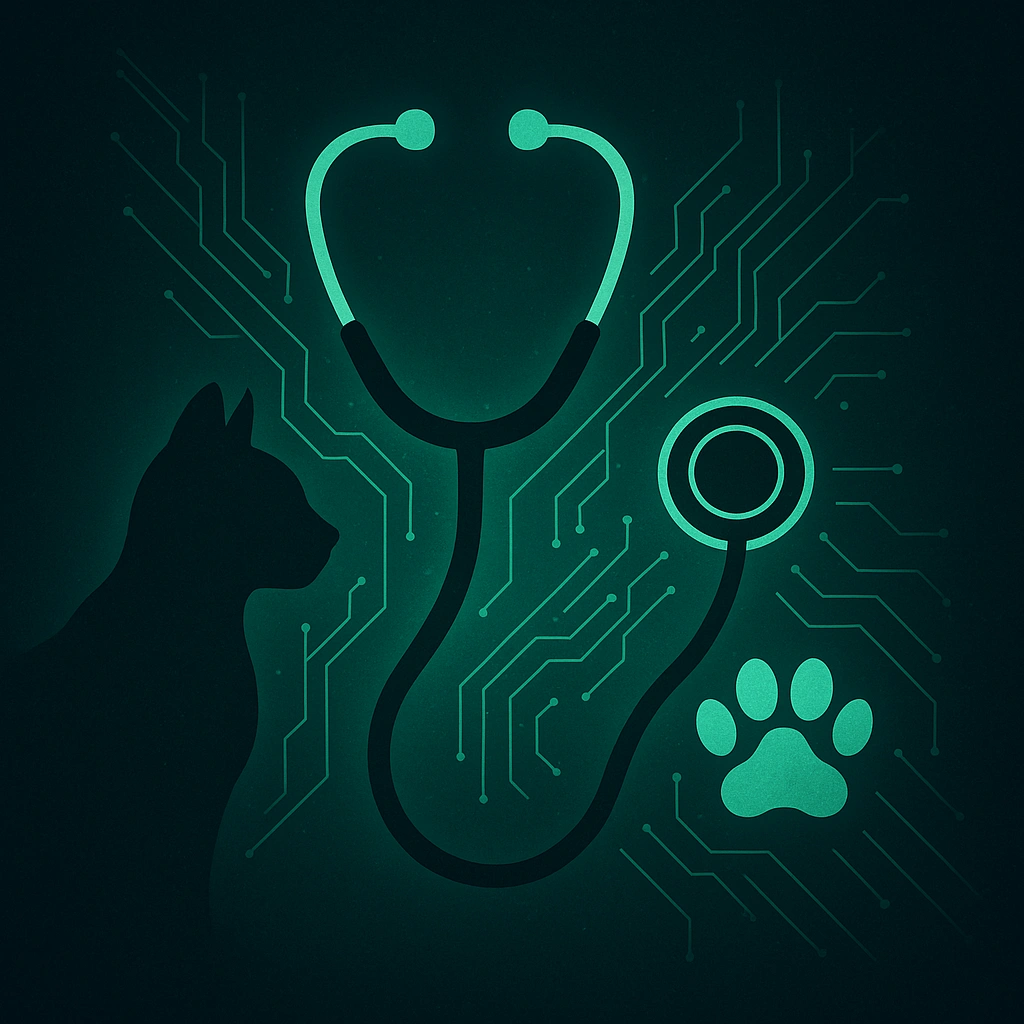
Veterinary Diagnostics & Pet Health
Modern pet care is undergoing a quiet revolution. Advanced sensors, imaging systems and machine‑learning algorithms are allowing veterinarians to peer inside an animal’s body without invasive procedures and to diagnose disease earlier than ever before. Deep networks trained on radiographs, ultrasounds and blood smears recognise subtle patterns that even experienced clinicians might miss. Wearable collars and smart feeding bowls collect continuous data on activity, heart rate and nutrition, giving pet owners and veterinarians a real‑time window into an animal’s well‑being. By combining these signals with behavioural observations, AI systems are beginning to personalise care for every animal—whether a cherished house cat or a dairy cow in a herd.
Statistical methods underpin this transformation. Classification algorithms sort images and sensor readings into healthy and pathological categories, regression models estimate vital signs such as weight, hydration or gestation progress, and clustering groups animals by similar symptoms or risk factors. By analysing time‑series data and environmental variables, predictive analytics forecast outbreaks of infectious diseases and anticipate complications following surgery. These models learn from vast troves of veterinary records, enabling early alerts that prompt intervention before conditions worsen. High‑quality, diverse datasets are essential to avoid bias across breeds, ages and species, ensuring diagnoses remain accurate.
The applications are diverse. Computer vision systems now assist radiologists in identifying tumours in dogs and cats, flagging anomalies in equine leg X‑rays and assessing dental health. Smart ear tags in livestock monitor rumination and temperature to detect mastitis or heat stress before symptoms are visible. Telemedicine platforms leverage AI triage to prioritise emergency cases, while recommendation engines tailor diet plans and medication dosages to individual metabolic profiles. In wildlife rehabilitation centres, machine‑learning models help caregivers assess pain and stress levels from facial expressions and movement patterns, improving outcomes for rescued animals.
Such capabilities raise important ethical and practical questions. Advanced diagnostics can be expensive, potentially widening gaps in access to care between wealthy and low‑income pet owners or smallholder farmers. Sensitive information about animals and their owners must be handled responsibly, with clear consent and robust data protection. Models trained primarily on companion animals may not generalise to exotic species or working livestock, so continual validation and oversight by veterinarians remain critical. Ultimately, AI should augment—not replace—human judgement, empowering veterinarians and caretakers to deliver more compassionate and effective care.
Back to articles